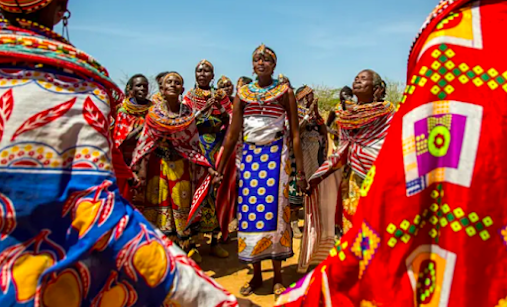3 - Sabina's Routine
Following my last blog post on Time Poverty, I want to highlight just how taxing the process of water collection is for women, as some of the harsh realities that come with it cannot be effectively conveyed through words alone. I knew that the task of hauling water was arduous, however, I did not really understand just how difficult it was until watching this video by ‘World Vision’. The YouTube clip follows the daily routine of Sabina, who lives in rural Kenya. It shows us how water dominates every single aspect of her life; she wakes up to feed and look after her husband (who works on the farm); then she feeds her children, and then she cleans the household. At around 2pm, when the sun is at its hottest, she begins her first trek of the day.
The walk is not easy. Its round-trip is 4 miles, 3 hours, and comes with many obstacles, thorn bushes and gates. On arrival, the river water is not only scarce, but it is also unclean and susceptible to cholera and other water-borne diseases; often their infants become infected and must be taken to emergency clinics for treatment. To harness the purest water that she can, she begins to dig a hole so that she can scoop up the groundwater and fill up her containers. After that is done, she walks back home with 70 pounds (32kg) of water on her back; this must be done twice per day. The women say that the backaches persist for hours after they return home, as they endure the intense pressure on their bones (Geere, et al. 2010).
Many women who collect water often have to outdoor their new-born babies around 2 weeks after giving birth, far less than the 6 weeks that the World Health Organisation recommends for postpartum mothers (Bintaayi Jeil et al. 2020). Sabina continued to haul water right up until, and on the day of giving birth, showing the extent to which mothers are often torn between their water responsibilities and giving their new-borns ‘motherly care’ (Bintaayi Jeil et al. 2020).
I could critique the video in that it possibly indicates "white-saviourism", and it over generalises the continent by advertising the video as “rural Africa”, however, it does accurately show the hardship that women like Sabina have to face. The video sums up the points made in my last two blog posts, and personally, I felt directly confronted with the issues at hand: water scarcity clearly consequents unfair livelihoods for women. It is a very moving video and so I urge you to watch it, as it is only 13 minutes long! I will be researching more into the organisation of ‘World Vision’ and the work that they do to tackle the issues of water scarcity.



Interesting account of the realities of gender and water! Perhaps add a sentence or two that focuses the main point you are trying to make. From what I can tell, it is that the realities of gendered roles around water collection are much harsher than they are made out to be in articles. Make this point clearer in your description. You can then return/sum up with a sentence or two at the end.
ReplyDeleteYour 'voice' is really coming through and it is a very easy and enjoyable read.
(GEOG0036 PGTA)
Thank you Kerry! Yes, I was trying to make that point, I will make some alterations.
DeleteInteresting post Heather, especially as the burden of women after childbirth had never been highlighted to me before. I am looking forward to reading more about 'World Vision'' work.
ReplyDeleteThank you Sophia! I was also surprised at how, for many women, responsibilities persist straight after having given birth.
DeleteI think this is an ingenious entry. I love how you focused on a single individual and their journey and troubles collecting water. I think it would interesting and maybe useful to critique this video as you said. Understanding our perspective and what is shown on the media might make us realise how dire the situation is or whether it is not as severe as the media plays it out to be. In many cases local knowledge and ways of doing things just works and doesn't need to be fixed, but for an outsider like us it may seem backwards. Do you think the media is providing an accurate representation or do you feel this is exaggerated?
ReplyDeleteThanks Nasir! In this situation, I think its severity was accurately conveyed - in terms of the extent to which Sabina's whole day is allocated to collecting water. However, one may perceive it to be less severe, as Sabina has such high spirits and completes the task with such perseverance.
Deletei really LOVE this post. i think it is really great and innovative who you decided to focus on one specific story and really detailed their experiences with collecting water. i also lie how you decided to critique the 'white-saviourism' of the video and posing a different perspective.
ReplyDeletei think to improve you could add a couple sentences at the end to really bring your point home.
Thank you Maha! I will take note of your suggestions :)
Delete